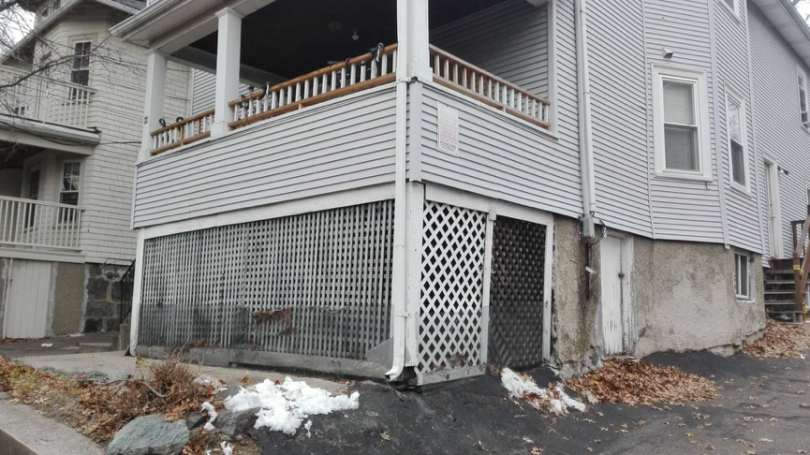By Yanxuan Li
BU News Service
BOSTON — The symptoms started with dreadful headaches, restlessness and pain in the back, limbs and loins. Next came depression, rapid breathing, burning thirst and a high temperature. Those that lived beyond five days were left with “carbuncles and buboes.”
While it sounds like a zombie movie, this description comes from the 1916 medical journal article by Dr. Edwin H. Brigham, depicting the 1798 bubonic plague that spread over most cities in Pennsylvania and followed the coastline in New England.
The threat of another epidemic is not confined to the realm of fiction.
“Bubonic plague was one of the most serious plagues that were spread through rats,” said William Christopher, the commissioner of Boston Inspectional Service Department. “We didn’t receive any reports on death or illnesses related to rats in recent years but that certainly does not mean we are never likely to have it.”
In fact, the rodent problem is on the rise in Boston.
According to a survey conducted by the U.S. Census Bureau, about 17 percent of households in Boston said they have witnessed rodents (rats or mice) inside their home in 2015, which ranked the city as the second most rodent-infested city among the 25 metro areas surveyed nationwide, the top city being Philadelphia.
“Rats only need three things to survive: water, food and shelter,” Christopher said.
As an expanding coastal city with a dense population, Boston offers all three of those requisites.
“More people means more trash, which means more food for rats,” said Christopher, whose department has received a rising number of complaints about rats in the past three years.
The Dorchester neighborhood tops the list of complaints, followed by the student-saturated Allston neighborhood.
Xia Xue lives in an apartment on Price Road in Allston. She still remembers her first encounter with a brown rat in her living room.
“It was as big as my palm,” Xue said. “My roommates and I spread some traps in the living room. But when we finally caught it, the problem came. We didn’t know how to kill it.”
The girls finally drowned the rat in a pail of water and threw the carcass into the trash barrel in the backyard of the building.
But the death of one rodent has little impact on the problem, said Mushhoor Abu-Rubieh of Alpha Management, the real estate management company that owns most of the buildings on Price Road.
“It is almost impossible to eliminate them,” he said. “We do cooperate with third-parties to offer free rat exterminating services to our tenants but they can just handle the specific case on hand. They can’t eliminate rats for good.”
Abu-Rubieh said of all the buildings Alpha owns around the city, most rat complaints come from Allston.
“It’s easy to understand,” Abu-Rubieh. “Simply considering how many parties are held in Allston every day. The trashes from those parties feed the rats.”
Daniel Hadley, a data scientist who helped build SomerStat, an online dataset concerning different city metrics, constructed four maps pinpointing every rat complaint sent to the city’s 311 hotline from 2011 to 2014.
The map shows the rattiest areas in Allston are the intersection of Allston Street and Brighton Avenue and the area along Harvard Avenue.
Lisa Timberlake, the director of publicity for the Inspectional Service Department, said city inspectors were also busy in the GAP (Gardener, Ashford and Pratt) area of Allston-Brighton.
Laura Yu, a student living on Allston Street, said the lack of multiple trash barrels for recyclable and non-recyclable garbage causes an overflow of trash in the backyard of the building.
“We have only one trash barrel,” Yu said. “It is perhaps better in winter now but it’ll stink from spring through autumn.”
In addition to student apartments, the large stock of old housing in the neighborhood also attracts vermin.
“Among all the complaints our maintenance department received, a large part of them were about the aged facilities in the house, for example the sewer systems,” Abu-Rubieh said.
According to Commissioner Christopher, Boston’s most common pest is the Norway Rat, a 10-inch-long creature that can sneak into the building through small holes in the foundation or the bottoms of doors and any breaks in the sewer line.

The holes in the foundation of a house and on the bottom of the door give chance for rats to sneak into the building. Dec. 18, 2017, Price Road. Photo by Yanxuan Li/ BU News Service
The city’s statistics show there were 2,100 complaints about rats in 2015, rising to 3,100 in 2016.
However, Christopher pointed out the increase of official complaints does not directly mean an increase in the number of rats in the city. He said an improved system for citizens to file complaints also contributed to the increase.
“We also work with other departments to resolve this problem,” Christopher said. “We have inspectors assigned to each neighborhood, conducting inspections to make sure there are no rodent infestations on a property. We also spread traps during the breeding seasons. But you know, this problem can only be solved by education.”
Christopher said among the various anti-rat programs, the “Block by Block” initiative in Chinatown was the most successful.
Under the 2014 program, Inspectional Service Department officials met with property owners and businesses, alerting and educating them on their respective trash policies, until the whole neighborhood was fully aware of their responsibilities.
“The residents in Chinatown used to throw the trash at the corner,” Christopher said. “They were not aware of the proper waste disposal procedures. We have done this education work block by block until the neighborhood was clean.”
Christopher believes the program should be applied to other neighborhoods to teach people about the rat hazard and the way to handle trash.





